Cleaning Rust from Stainless Steel: Effective Techniques
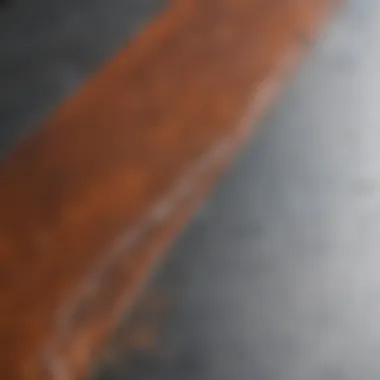
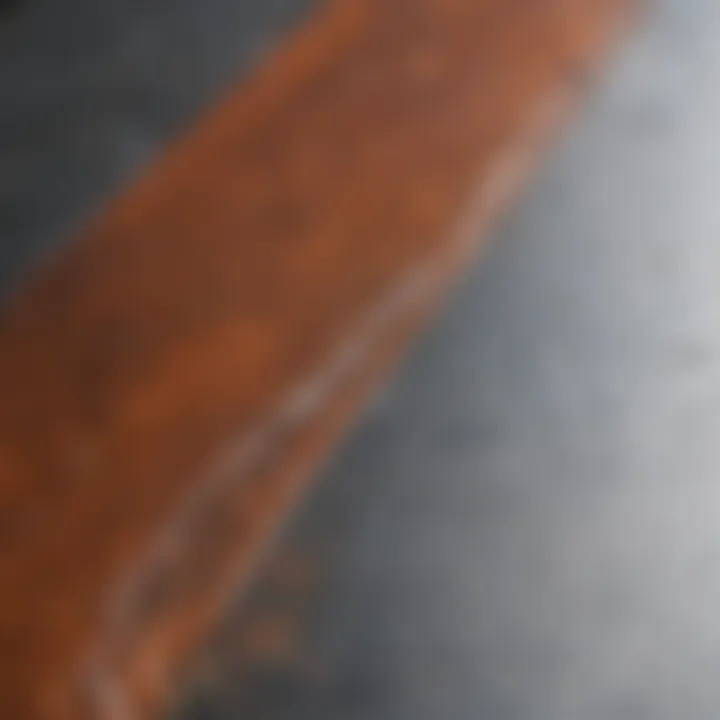
Intro
When you think of stainless steel, the first thing that comes to mind is its gleaming surface and resistance to rust, right? Well, sometimes, even the most polished of materials can fall victim to unsightly spots. The occurrence of rust can stem from various factors, including exposure to moisture, salt, and even air pollutants. While it might sound disheartening, there are plenty of effective techniques for tackling rust on stainless steel surfaces. This guide explores cleaning methods, preventative measures, and routines that will help not just in removing rust, but also in maintaining that shiny look that we all admire.
Effective Cleaning Techniques
Cleaning rust off stainless steel is not as daunting as it sounds. Here’s how you can get started with some straightforward tips:
Step-by-Step Cleaning Process
- Gather Your Supplies
To kick things off, you'll need essential cleaning supplies. Grab some white vinegar, baking soda, and a soft cloth or sponge. Avoid using steel wool, as that might scratch the surface. - Use Vinegar for Light Rust
If you notice minor rust spots, soak a cloth in white vinegar and place it on the affected area. Let it sit for about 30 minutes to loosen up the rust. - Create a Baking Soda Paste
For tougher spots, mix baking soda with water to create a paste. Apply it to the rust and rub gently using a cloth. This acts as a mild abrasive that won’t harm the steel. - Rinse and Dry
Once the rust is gone, rinse the surface with water and dry it thoroughly to prevent any future rust formation.
"An ounce of prevention is worth a pound of cure.” - Ben Franklin
These steps promote a strong cleaning foundation. However, understanding how to prevent rust from forming is just as important.
Preventative Measures
While you might tackle rust as it appears, keeping your stainless steel surfaces rust-free is an ongoing task. Here are some measures to consider:
- Regular Cleaning: Make it a habit to wipe down your stainless steel surfaces often. Just a simple routine of cleaning will help.
- Avoid Exposure: Minimize the contact your stainless steel has with saltwater or moisture.
- Proper Drying: After cleaning, make sure to dry the surfaces well as moisture is often a rust's best friend.
Maintenance Tips
Stainless steel maintenance isn't rocket science, but there are a few golden rules to follow:
- Use Sealants: Consider a protective sealant to minimize rust formation.
- Choose the Right Cleaners: Vinegar is great, but making sure you don't use harsh chemicals that can damage the finish will go a long way.
- Inspect Regularly: Keep an eye out for signs of corrosion. Early intervention is key.
Ending
Maintaining the look of stainless steel shouldn't feel like a herculean task. With the right techniques to remove rust and some sensible preventive measures, your stainless steel surfaces can remain both functional and fabulously attractive. The reliance on common household items like vinegar and baking soda is a win-win, keeping your environment eco-friendly while being gentle on your cherished materials.
Understanding Rust on Stainless Steel
Understanding rust on stainless steel is the foundation for anyone looking to maintain the integrity and appearance of their stainless steel items. While it's commonly believed that stainless steel is rust-proof, that notion can be misleading. It’s essential to recognize that this material, while resistant to corrosion, is not completely impervious. Over time, factors such as moisture, exposure to harsh chemicals, and even physical damage can lead to rust formation.
Rust can ruin the sleek look of stainless steel surfaces. Therefore, identifying how and why rust appears on these materials is crucial for effective cleaning and future prevention. Cleaning isn’t just about aesthetics; it’s about preserving the longevity and functionality of your stainless steel products, whether they be kitchenware, tools, or outdoor furniture.
"A stitch in time saves nine" rings particularly true here. Addressing rust early can prevent further damage and costly replacements down the road.
Furthermore, by digging into the nature of stainless steel and understanding the conditions that contribute to rust, you can make informed decisions regarding proper maintenance techniques. This knowledge not only ensures that you keep your stainless steel looking its best but also empowers you to implement preventative measures, fostering a deeper appreciation for the materials you use daily.
The Nature of Stainless Steel
Stainless steel is an alloy primarily made of iron, with at least 10.5% chromium added. This chromium is what plays a pivotal role in preventing rust. When stainless steel is exposed to oxygen, the chromium reacts to form a thin layer of chromium oxide on the surface. This protective layer acts as a barrier, preventing further corrosion.
Despite its strength and resistance, stainless steel isn’t a fortress. Different grades of stainless steel offer varying levels of corrosion resistance, influenced by their composition. For example, the304 grade is prevalent in kitchen applications, while 316 offers superior protection against chlorides, making it ideal for marine use.
Understanding the specific type of stainless steel you are dealing with helps in selecting the right cleaning method and chemicals to use. For instance, low-grade stainless steel can easily get damaged by abrasive cleaners, leading to more rust in the long run.
What Causes Rust on Stainless Steel?
Several factors can contribute to rust on stainless steel, often catching users off guard. Here are the most significant culprits:
- Moisture: High humidity or prolonged exposure to water can lead to rust formation.
- Harsh Chemicals: Certain cleaners or substances, like bleach, can compromise the protective layer, allowing rust to seep in.
- Scratches and Damage: Physical abrasions break the chromium oxide layer, exposing the underlying steel to oxidation.
- Environmental Factors: Salty air, particularly in coastal regions, can be devastating for stainless steel without proper maintenance.
- Poor Quality Stainless Steel: The choice of materials significantly impacts how resistant surfaces are to rust.
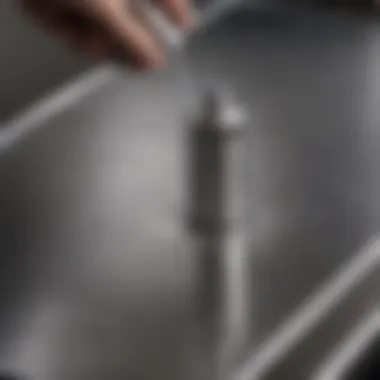
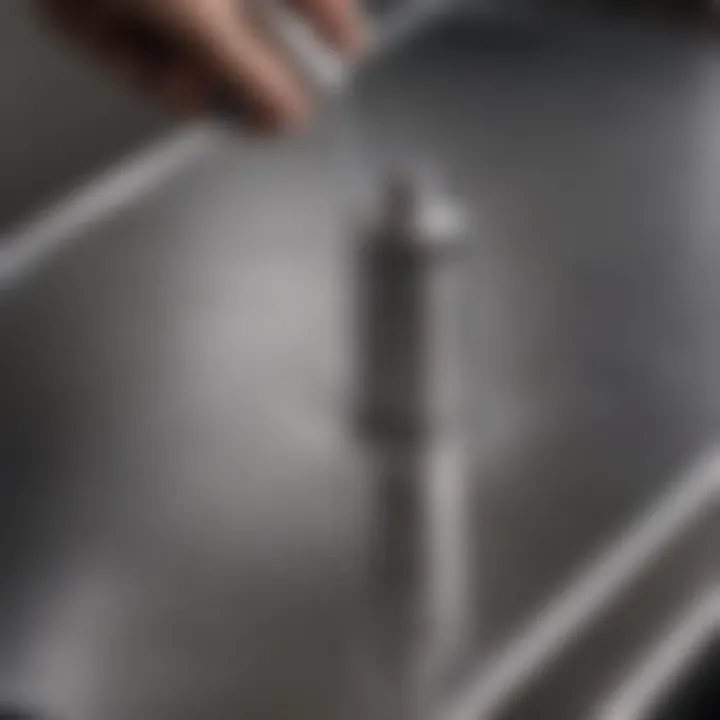
By recognizing these causes, homeowners and design enthusiasts can tailor their care regimens to protect their stainless steel items effectively. Whether it’s following simple cleaning tips or choosing better products to start with, being proactive can drastically reduce the likelihood of rust appearing.
Initial Assessment of Rust Damage
Assessing rust damage might seem like a trivial task, but it’s absolutely vital before diving into any cleaning methods. Ignoring the rust’s extent can lead to a botched cleanup or worse, further damage. Knowing what you're dealing with helps in choosing the right approach, minimizing potential long-term issues.
Sometimes, folks might rush to grab the steel wool or a commercial cleaner without first pausing to inspect the situation. Taking a moment to assess the damage can save you time and effort. Plus, understanding rust types can guide you to the most suitable technique for removal, maximizing efficiency.
Identifying Rust Types
Not all rust is created equal. There are a few different types that can mar the aesthetic sheen of stainless steel surfaces. Each one arises from particular conditions and may necessitate a different method of removal.
1. Surface Rust: This is typically superficial, affecting only the top layer of your stainless steel. It’s the kind that might arise from moisture exposure but is generally easy to wipe away or scrub off. A simple treatment might involve a paste made from baking soda and water.
2. Pitting Corrosion:
This form is more insidious. Instead of forming a continuous layer of rust, it creates small pits or depressions in the metal. It often indicates serious exposure to corrosive elements and typically requires prompt attention to prevent further decay. In this case, you might be looking at specialized cleaning products or even professional help.
3. Crevice Corrosion:
This type occurs in the nooks and crannies of stainless steel items – think grill grates or hinges. The rust might go unnoticed until it starts to show up more prominently. Depending on how deep it goes, you may need a combination of manual cleaning and chemical treatment.
Identifying these types not only aids in cleaning but also helps in understanding the potential cause, which can be vital in preventing future occurrences.
Evaluating Extent of Damage
Once you've identified the type, it's time to evaluate just how bad it is.
1. Visual Inspection:
Take a good look. Is the rust concentrated in a small area, or is it widespread? Does it show signs of going deeper than surface level? For instance, a few spots here and there might only require a little elbow grease, while extensive rusting could signal the need for a more thorough process.
2. Testing for Structural Integrity:
Gently tap the rusted area with a small tool. If it feels flimsy or crumbles away, this could indicate deeper damage. In such cases, cleaning will not only involve removing rust but also assessing whether the integrity of the item is compromised. You wouldn’t want to end up with a broken appliance or piece of furniture.
3. Longevity Consideration:
Consider how long the rust has been present. If it’s prolonged, there’s likely going to be a need for deeper remediation. A rust stain that just popped up may respond well to common household items, but aged rust often requires more intense cleaning strategies.
Cleaning Techniques for Rust Removal
The battle against rust on stainless steel isn’t just about aesthetics; it goes deeper into preserving the integrity and functionality of your items. Rust can cause permanent damage if not addressed swiftly. In this section, we’ll explore various cleaning techniques that can effectively remove rust, ranging from everyday household items to commercial solutions. The right cleaning method can greatly influence not only the appearance of stainless steel but also its longevity.
Using Household Items
Household items often provide simple yet effective solutions for rust removal. Not only are they readily available, but they also offer an affordable option for homeowners looking to maintain their stainless steel surfaces without breaking the bank.
Baking Soda Paste
Baking soda paste stands out as a superb alternative for rust removal. This classic pantry item is known for its gentle abrasive qualities. Let’s not forget, it’s also safe to use on various surfaces, which makes it a go-to for many people. Mixing baking soda with water creates a paste that can scrub away rust without scratching the metal. A key characteristic of baking soda is its versatility; it can tackle stubborn spots or be used for general maintenance.
However, while baking soda is effective, it may take some elbow grease to fully remove heavy rust spots, especially if they have been left untreated for an extended period.
Vinegar Soak
Vinegar soak is another reliable method when dealing with rust. Acetic acid in vinegar acts as a chelating agent, which effectively dissolves rust on stainless steel. This method is particularly beneficial for intricate items or those with detailed designs, as the liquid can seep into crevices that scrubbing cannot reach. One unique feature of vinegar is its natural deodorizing ability, which leaves surfaces smelling fresh afterward. That said, prolonged exposure to vinegar can potentially lead to corrosion; thus, it’s best to use it cautiously and rinse thoroughly after.
Salt and Lemon Juice
Salt and lemon juice create a dynamic duo when it comes to rust removal. The acidity of lemon juice combined with the abrasive nature of salt works wonders on light rust stains. This method is not only effective but also eco-friendly and safe to use around the house. A noteworthy characteristic of this mixture is that it turns into a slight scrubby paste that can lift rust away while leaving a citrus scent behind. However, the downside is that this method may not be as potent against severe rust, and repeated applications might be necessary to see significant improvements.
Commercial Rust Removers
While household items can do the job, sometimes you need a little more firepower. Commercial rust removers are specially formulated products designed to tackle various types of corrosion on stainless steel. They often contain stronger acids or chelating agents, making them effective against tough rust.
Types of Rust Removers
Among commercial options, there are several types to consider. Some are gel-based, allowing for easy adhesion to vertical or uneven surfaces. Others are liquid formulas that require soaking or wiping methods. The key characteristic of these products is their potency; they often yield quick results when used correctly. However, one must tread lightly; certain products can be harsh on your stainless steel and may even affect its finish if misused. Always check the instructions and test a small area before extensive use.
Proper Application Techniques
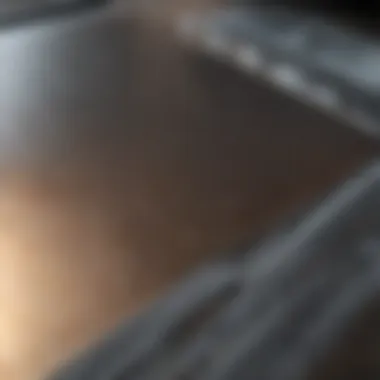
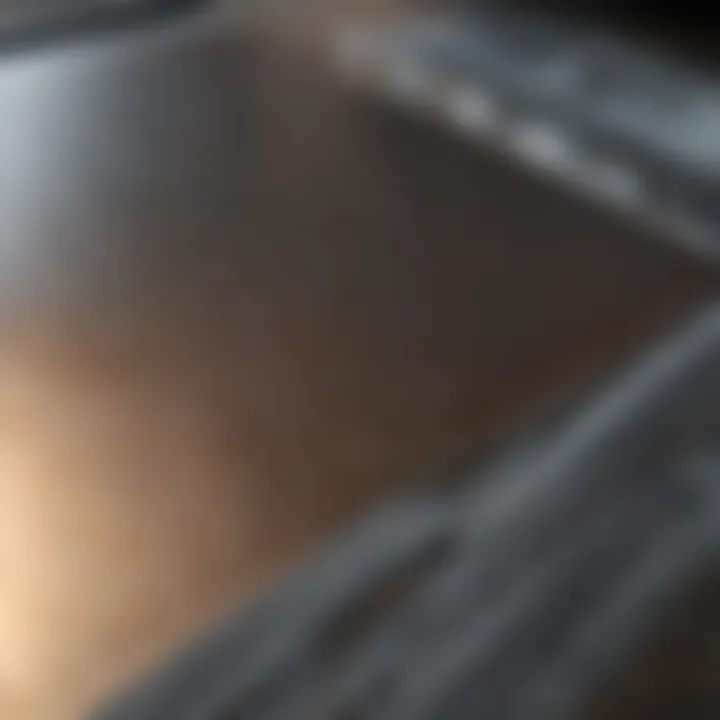
Achieving the best results with commercial rust removers hinges significantly on proper application techniques. Whether you’re spraying, rubbing, or soaking, it’s crucial to follow the manufacturer’s guidelines. For many commercial products, allowing adequate dwell time for the chemicals to work their magic is essential. One unique aspect of these techniques is the need for safety measures, such as wearing gloves or goggles, to protect your skin and eyes. While effective, mishandling these potent chemicals can lead to unintended consequences, further emphasizing the need for careful handling.
Mechanical Methods
When household remedies and commercial products fall short, mechanical methods often come into play. These techniques can be useful for larger areas or highly corroded surfaces where other methods have proven less effective.
Using Steel Wool
Using steel wool can be a straightforward way to tackle rust spots effectively. While it’s a rather direct solution, it’s important to choose the right grade of steel wool to avoid scratching the stainless steel surface. By employing a gentle scrubbing motion, users can remove rust effectively. The main advantage of steel wool is its availability and ease of use, making it a popular choice. However, users should note that too aggressive scrubbing can lead to scratches and may require additional work to polish the affected area afterward.
Power Tools for Larger Areas
Power tools, such as sanders or grinders, can be invaluable when dealing with extensive rust damage on stainless steel. These tools provide significant power, speeding up the process dramatically. Their unique feature is the variety of attachments available that cater to different levels of surface severity. While they can produce impressive results, care must be taken with their use. The risk of removing too much material or creating uneven surfaces can lead to more problems down the line. Therefore, it’s essential to use power tools with caution and perhaps even consider consulting professionals for larger-scale rust removal.
Remember, the goal is to restore your stainless steel items to their former glory, while maintaining their structural integrity. Cleaning isn't just about looks; it directly impacts longevity.
Safety Precautions During Rust Removal
Cleaning rust off stainless steel can really make your belongings shine like new. But before diving into the task, it’s crucial to take several safety precautions. Not only do these steps protect you, but they also ensure that the cleaning process goes as smoothly as a well-oiled machine.
Protective Gear
When it comes to working with cleaning agents, protective gear is your first line of defense. A pair of sturdy rubber gloves can save your hands from harsh chemicals that may irritate or even damage your skin. Safety goggles are equally important. They shield your eyes from any splashes, especially when using acidic solutions like vinegar or commercial rust removers. It’s easy to overlook this aspect, but trust me: nothing ruins a good cleaning spree faster than a surprise sting in your eyes.
Also consider wearing a dust mask or respirator if you are working in an area with poor ventilation or using substances that release fumes. A simple cloth mask may do if the rust is only light, but for more serious rust issues or heavy chemical usage, go for a certified mask. Beyond that, wear old clothes that you don’t mind getting stained, especially if you’re using anything abrasive like steel wool.
Ventilation Considerations
Good ventilation is an often overlooked but vital aspect when cleaning rust off stainless steel. Many cleaning agents emit various fumes or can cause harmful reactions if confined in a small space. Open windows. If possible, set up a fan or two to keep air flowing. Consider using it to direct air out of the room, pulling potentially harmful vapors outside.
Working in a well-ventilated area also creates a more comfortable cleaning environment. Breathing in fresh air while tackling rust is not just safer, but it can make the chore feel less daunting. If you notice any strong odors, step outside for a breather. It’s always better to be safe than sorry.
"An ounce of prevention is worth a pound of cure." This old saying underscores the importance of taking safety precautions.
Summary of Safety Tips
- Wear rubber gloves to protect your skin.
- Use safety goggles to shield your eyes.
- Consider a dust mask or respirator if necessary.
- Ensure good ventilation by opening windows and using fans.
- Choose old clothes that can get stained.
In essence, being mindful of safety during rust removal not only safeguards your health but can also enhance the effectiveness of your cleaning efforts. Following these simple steps allows you to approach the task with confidence, ensuring your stainless steel remains beautiful without compromising your well-being.
Post-Cleaning Care for Stainless Steel
Once the hassle of removing rust from stainless steel is all said and done, the post-cleaning care is like putting the icing on the cake. It's critical to recognize that the cleanliness achieved through effective techniques needs to be maintained to prevent future rust issues. Think of this stage as not merely an afterthought but as an essential component that extends the lifespan and aesthetic charm of your stainless steel items.
A well-executed post-cleaning routine goes beyond just a once-over with a cloth. It reaffirms the effort previously spent in cleaning and serves to enhance the appearance and durability of stainless steel surfaces. Regular polishing, combined with the application of protective coatings, can significantly decrease the likelihood of rust returning.
Polishing Techniques
Polishing stainless steel is like giving it a spa day. It rejuvenates the surface, lifts away fingerprints, smudges, and minor scratches, leaving it gleaming and attractive. To get started effectively, here are some techniques to consider:
- Microfiber Cloths: These are the unsung heroes of polishing. They trap dirt and moisture without scratching.
- Specialized Polishes: Use products meant for stainless steel. They contain agents that enhance shine while leaving a protective layer behind.
- Regular Maintenance: Frequent polishing, say every few weeks, keeps things looking pristine.
The benefit of polishing cannot be overstated: it not only retains the luster but also makes further cleaning easier. If surfaces look well cared for, they tend to attract less dirt and grime.
Applying Protective Coatings
After polishing up your stainless steel, applying protective coatings seals the deal. This stage is crucial because it acts as a barrier against rust and environmental factors that contribute to deterioration.
Choosing the Right Sealants


Selecting the appropriate sealant is pivotal. Look for options specifically formulated for stainless steel. A key characteristic here is durability, which directly impacts how long the protective layer will last before needing a refresh. Polyurethane sealants, for instance, are renowned for their robust properties. They can withstand heat and moisture, making them suitable for both indoor and outdoor settings.
However, keep in mind that sometimes over-applying sealant can cause it to peel or misapply, leading to more hassle than help. It's about finding that sweet spot with a sealant that meets your needs without going overboard.
Application Methods
When it comes to applying these protective coatings, the method matters just as much as what you’re using. Spray application is a popular method as it ensures even distribution. It's smooth sailing for most, though user caution is necessary to prevent overspray onto adjacent areas.
On the other hand, brush application allows for more control, especially in tight spots. This method could take a bit longer but provides precision where it counts. A unique feature is that depending on the method, the finish of the surface may vary—a brushed finish could offer a different visual than a sprayed one.
However, it's vital to note that protective coatings aren’t permanent. Regular assessments for wear and tear will be necessary, and you should plan to refresh your sealant at least once a year.
Remember: Consistently caring for your stainless steel surfaces post-cleaning will not only preserve their appearance but ensure they stand the test of time, resisting rust like a pro.
Preventing Future Rust Buildup
When it comes to preserving stainless steel’s charm and longevity, the adage ‘an ounce of prevention is worth a pound of cure’ couldn’t ring truer. Rust can sneak up on even the shiniest of surfaces, tarnishing both the aesthetic appeal and the integrity of stainless steel. By focusing on preventive measures, you can save both time and headaches in the long run. Not only does this help maintain the beauty of your stainless items, but it also extends their life considerably.
Proper Storage Practices
Storing stainless steel properly is crucial in the battle against rust. First off, it's best to keep stainless items in a dry place, away from dampness and humidity. Utilizing cabinets or containers can create a buffer from moisture in the air. It’s important to also avoid storing items directly against surfaces that may trap moisture, like metal or concrete.
Additionally, for items that are used regularly, consider placing a desiccant or a moisture absorber in the vicinity. This simple yet effective practice can prevent condensation build-up, which contributes greatly to rust formation. Regularly inspecting the area for any leaks or water stains can also go a long way toward preventing potential issues down the line.
Regular Maintenance Tips
Regular maintenance plays an equally significant role in avoiding rust on stainless steel. A few small changes in habits can make a world of difference.
Routine Cleaning Schedules
Establishing a routine cleaning schedule can’t be overstated. It’s like tending to a garden; if you water it regularly, it flourishes, but let it go too long, and you get weeds. For stainless steel, consistency is key. Typically, cleaning it at least once a week can help remove any grime or moisture that might encourage rust development.
This schedule appeals to many due to its simplicity and effectiveness. You might use a microfiber cloth and warm, soapy water for general cleaning, followed by a rinse and towel dry. Having a set day for this task makes it a habit and removes the risk of neglect. However, one should be cautious not to use abrasive cleaners that may scratch the surface because scratches can become tiny nests for rust to form!
Inspecting for Signs of Rust
Regular inspection of stainless steel surfaces can significantly contribute to rust prevention as well. This means taking the time, perhaps biweekly, to visually check for any discoloration or pitting that might indicate the early stages of rust.
A key characteristic of this practice is its proactive approach. Being vigilant helps catch potential issues before they escalate into something more serious. It might come across as tedious, but it is undoubtedly a petite price to pay for maintaining the spotless look of your steelware. The unique aspect of this checking process is that it doesn’t require much more than your eyes and a little patience, but it can save you considerable effort later on. Missing that early warning could lead to extensive cleaning or even replacement costs.
By incorporating both proper storage practices and regular maintenance routines, you’ll not only keep rust at bay but also ensure that your stainless steel continues to shine bright for years to come.
Epilogue: Maintaining Stainless Steel's Integrity
In the realm of home care and maintenance, keeping stainless steel items rust-free is not merely a chore; it is essential for preserving both their appearance and functionality. Rust not only detracts from the aesthetic appeal of stainless steel surfaces but can also compromise their structural integrity over time. Therefore, understanding how to combat rust, as well as employing effective preventative techniques, ensures that your stainless steel investments remain as good as new for years to come.
Key Elements Worth Considering
- Understanding the Composition: Stainless steel, composed primarily of iron, chromium, and nickel, is engineered to resist oxidation. Yet, in certain environments, particularly those with high moisture or salt exposure, even stainless steel can succumb to rust. Knowing this helps caretakers take necessary precautions.
- Effective Cleaning Regimen: Regular cleaning, tailored to the specific location and usage of the stainless steel, goes a long way. Techniques like using baking soda pastes or vinegar soaks should not be viewed as mere remedies for existing rust but rather preventive measures that maintain the item’s integrity and sparkle.
- Post-Cleaning Maintenance: Once rust has been addressed, implementing protective coatings can be invaluable. Sealants designed for stainless steel can offer a barrier against moisture and other corrosion-inducing elements, substantially elongating the lifespan of your items.
The Benefits of Vigilance
Maintaining the integrity of stainless steel comes with numerous benefits:
- Aesthetic Longevity: A well-maintained surface keeps its shine and stylish look, contributing to the overall elegance of your décor.
- Safety and Hygiene: Rust can harbor dangerous pathogens. Regular upkeep not only ensures that surfaces look good but also remain safe and hygienic for food preparation or other activities.
- Cost-Effectiveness: Investing time in proper care prevents the more significant costs associated with replacing rusted items or surfaces.
Thoughtful Considerations Going Forward
Homeowners and design aficionados must appreciate that the path to maintaining stainless steel integrity involves more than just reactive measures. Here’s a quick guide:
- Stay vigilant: Regularly inspect your stainless steel items.
- Choose appropriate cushions or pads to prevent scratches that could trap moisture.
- When cleaning, consider the underlying cause of any rust rather than applying fixes without investigating.
"An ounce of prevention is worth a pound of cure."
Keeping stainless steel in tip-top shape requires endeavor and commitment. But as we’ve explored, the payoff is significant. By staying informed and proactive, anyone can ensure their stainless steel surfaces not only shine but also stand the test of time.







